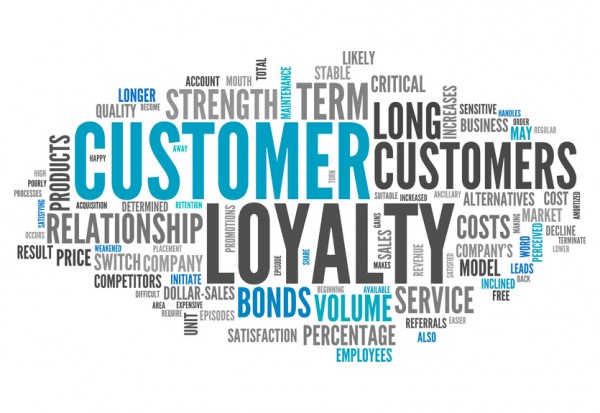Voice of Customer – do you speak "customerese"?
23/09/2014
Measurement of customer expectations and customer satisfaction is an essential prerequisite for targeted quality management. In our periodically published series "Voice of Customer", we will provide an overview of the most important methodological aspects.
In the course of ongoing globalization, suppliers from emerging countries have significantly intensified price competition. As a result, B2B companies in industrialized countries have come to recognize the growing importance of first understanding and then meeting their customers’ expectations to the best of their ability. However, to achieve that aim companies need to ask the right people the right questions. They then need to thoroughly understand the answers in order to develop and adopt concrete measures. Here, B2B follows its own rules: in contrast to B2C which deals with the anonymous mass customer, B2B surveys smaller samples of known customers and is characterized by long-term relationships and interactions across multiple company functions. The B2B customers are also more prone to making rational decisions about the purchasing of rather complex products.Customer Loyalty.Loyalty is a central target and an indicator of the state of the customer relationship. It refers to the fidelity of a customer to a company in the sense of a positive, voluntary and emotional relation, leading to long-term, trustful and possibly exclusive partnership.In customer satisfaction surveys, customers are often asked about their satisfaction with the products and services of a company. In this context, loyalty is often seen as an automatic consequence of a high satisfaction level and not as a key target for the development of customer retention. This approach wastes an opportunity to gain a much deeper understanding of the foundations of the relationship to the customers.The measurement of loyalty provides a variety of additional insights: The respective indicators capture underlying causes of (dis-)satisfaction, loyalty and buying behavior; they enable the identification of performance criteria with an especially strong impact on customer retention; they uncover basic and enhanced business opportunities and reveal potential threats such as competitive disadvantages. For in-depth insights, it is important to ask respondents to specify reasons for high or low values of loyalty indicators (e.g. “Have you thought about changing your supplier? If yes: why?”).There are various indicators that can be used to measure loyalty. For surveys, prospective assessments by the customer are very suitable: What is the possibility …that you will recommend the company to a peer? …that you will purchase from the company in the future? … that you will use opportunities from cross-selling and that you will expand demand? The willingness to switch to another supplier may be a suitable indicator as well. In retrospect, useable data can be, e.g., the duration of the customer relationship, the number of competitors considered for the invitation of tenders, or the share-of-wallet, i.e. the share of the total order volume for a specific product category.For a targeted development of customer relationships it can be useful to group customers according to satisfaction and loyalty on the basis of collected indicators. Differentiating e.g. between truly loyal, indifferent, unwillingly bound, pragmatic and acutely dissatisfied customers helps to define measures from the right angle. When this is done, significant differences may appear between these indicators: A high loyalty value may occur even for dissatisfied customers if they are contractually bound against their will to the supplier by warranty provisions or any other barriers to change. On the other hand, customers may be very satisfied, but generally deal with several suppliers or are even obliged to do so by corporate rules, and consequently may show low loyalty values.Figure: customer segmentation by loyalty and satisfaction (fictitious data).Loyalty scores permit comparisons to be made and benchmarks to be defined, e.g. by means of a longitudinal observation of the development of loyalty or by means of loyalty comparisons across regions, product groups or business units. The KPI CLR (Customer Loyalty Ratio) draws upon multiple indicators to calculate the ratio between proponents and opponents, i.e. customers with a positive attitude towards the company against critically minded customers. The CLR enables reliable comparative statements on the overall situation of a company and its sub-segments, e.g. identifying which business unit is the internal benchmark for relationship management or showing differences in the success of marketing activities across regions.Driver analysis helps to calculate the influence of various performance aspects on loyalty and subsequently to identify measures to strengthen customer retention. Typically, this is done using statistical approaches such as multivariate linear regression models or structural equation modeling to derive the relative impact of (dis-)satisfaction at interfaces between companies and their customers and the impact of (dis-)satisfaction regarding specific performance criteria on loyalty indicators. A frequent finding in our studies: soft factors such as customer service or complaint management, despite usually being claimed as less important when compared to factors like price or product quality, can indeed play a vital role in strengthening loyalty.Loyalty plays an important role both as a success factor and as a safety factor: It ensures the stability of the business relationship, provides the basis for extending the business relationship, e.g. via cross-selling, and strengthens positioning against competitors. At the same time, highly loyal customers are more forgiving when it comes to temporary weaknesses of product or service quality, and they are more willing to accept price increases. Thus, it is worthwhile to deal with customer loyalty as strategic target of outstanding importance.